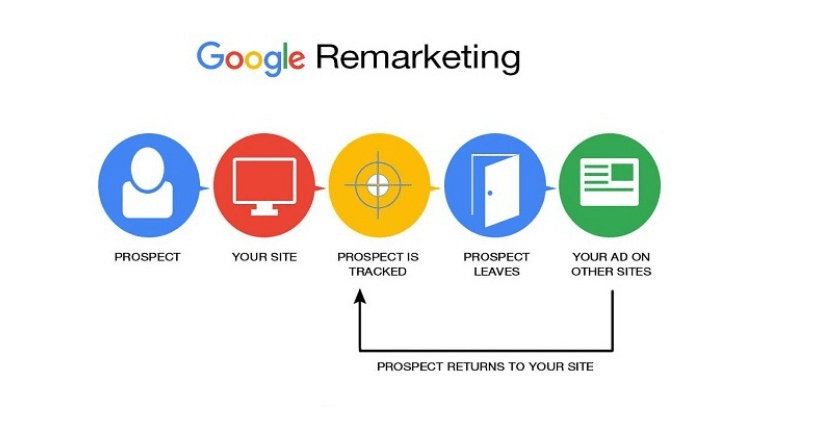Losing customers is inevitable. Whether it’s due to a lackluster user experience, competing offers, or simply forgetting about your brand, lost customers represent untapped potential. Fortunately, Google’s remarketing strategies offer a lifeline, allowing businesses to reconnect with former visitors and convert them into loyal patrons. Remarketing—or retargeting—isn’t just about reminding people that your brand exists; it’s about delivering personalized, relevant messages that resonate with their needs and motivations. In this guide, we’ll explore how Google’s remarketing tools empower businesses to win back lost customers and foster lasting relationships.
Understanding the Power of Remarketing
Remarketing works by targeting users who have previously interacted with your brand but haven’t converted. This interaction could involve visiting your website, adding items to their cart, or engaging with your social media posts. By serving tailored ads to these users, you can reignite interest, address objections, and encourage them to complete their journey.
The beauty of remarketing lies in its ability to combine data-driven insights with emotional resonance. Unlike cold outreach, remarketing leverages existing familiarity to build trust and credibility. For example, a visitor who abandoned their cart might receive a reminder email highlighting the benefits of completing the purchase, complete with a limited-time discount to sweeten the deal.
Google’s remarketing tools operate through cookies, which track user behavior across the web. When a user visits your site, a cookie is placed on their browser, allowing you to serve targeted ads when they browse other websites or search on Google. This seamless integration ensures that your message reaches the right audience at the right time.

Setting Up Google Remarketing: The First Steps
Before diving into advanced tactics, it’s essential to establish a solid foundation. Here’s how to set up Google remarketing effectively:
Step 1: Install the Remarketing Tag
The first step is installing the remarketing tag on your website. This tag allows Google to identify users who visit specific pages or perform particular actions. To install the tag:
- Navigate to your Google Ads account and select “Tools & Settings.”
- Under “Measurement,” click on “Setup” and choose “Tag Manager.”
- Follow the prompts to set up a new container and add the remarketing tag.
- Once installed, verify that the tag is functioning correctly by testing it in the browser.
Step 2: Create Remarketing Lists
Remarketing lists are groups of users who meet specific criteria, such as visiting certain pages or spending a certain amount of time on your site. To create lists:
- Navigate to the “Audiences” tab in your Google Ads account.
- Click on “+ New Audience” and select “Custom Combination.”
- Define your criteria, such as page views, session duration, or product category.
- Save the list and assign it a name for easy reference.
Step 3: Build Remarketing Campaigns
With your lists in place, you can begin building remarketing campaigns. Start by selecting the appropriate campaign type—Search, Display, or Video—and linking it to your remarketing lists. Customize your ad creative to align with the list’s characteristics. For example, users who abandoned their carts might receive ads featuring their specific items, while those who browsed your homepage might receive general brand messaging.
Advanced Remarketing Techniques: Going Beyond the Basics
Once your foundation is solid, it’s time to explore advanced techniques that take remarketing to the next level. These strategies leverage data, psychology, and technology to maximize engagement and conversions.
Dynamic Remarketing: Personalizing the Experience
Dynamic remarketing takes personalization to a whole new level by tailoring ads to individual users based on their browsing history. For example, if a user viewed a pair of sneakers on your site, they might see an ad featuring those exact sneakers with a special offer. This approach builds trust and relevance, as users feel seen and understood.
To implement dynamic remarketing:
- Enable dynamic remarketing in your Google Ads account.
- Upload your product feed to Google Merchant Center.
- Create dynamic ad templates that pull data from your feed.
- Test and refine your ads to ensure they align with your branding.
Sequential Remarketing: Guiding Users Through the Funnel
Sequential remarketing involves serving a series of ads that guide users through the buyer’s journey. For instance, a user who visited your homepage might receive an introductory ad highlighting your brand’s value proposition. Later, they might see a mid-funnel ad showcasing specific products or services, followed by a final-stage ad offering incentives to convert.
This approach mirrors the natural progression of decision-making, addressing common objections and building momentum toward conversion. To execute sequential remarketing:
- Segment your audience based on their stage in the funnel.
- Create ads tailored to each segment’s needs and motivations.
- Schedule your ads to appear sequentially, ensuring they align with the user’s timeline.
Lookalike Audiences: Expanding Your Reach
Lookalike audiences extend the reach of your remarketing efforts by targeting users who resemble your existing customers. Google analyzes your remarketing lists to identify similar profiles across the web, expanding your pool of potential customers. This strategy is particularly effective for acquiring new leads who are predisposed to engage with your brand.
To create lookalike audiences:
- Navigate to the “Audiences” tab in your Google Ads account.
- Click on “New Audience” and select “Lookalike Audience.”
- Choose the source audience (your remarketing list) and specify the percentage of similarity.
- Launch your campaign and monitor performance.
Measuring Success: Tracking Your Impact
Measuring the effectiveness of your remarketing efforts is crucial for optimizing your strategy. Google Ads provides robust reporting tools to track key metrics such as click-through rates (CTR), conversion rates, and return on ad spend (ROAS). Here’s how to interpret these metrics:
- CTR: Measures how often users click on your ads. A higher CTR indicates relevance and engagement.
- Conversion Rate: Tracks the percentage of users who complete desired actions, such as purchases or sign-ups.
- ROAS: Calculates the revenue generated relative to your ad spend. A positive ROAS confirms profitability.
Regularly review your performance data to identify trends and areas for improvement. Use A/B testing to compare different ad variations and refine your approach.
Ethical Considerations: Respecting User Privacy
As remarketing gains traction, ethical concerns arise. Users may feel uncomfortable being tracked across the web, especially if they perceive your ads as intrusive. To maintain trust:
- Be transparent about your data collection practices and provide opt-out options.
- Respect user privacy by adhering to GDPR and CCPA regulations.
- Avoid overly aggressive messaging that could alienate potential customers.
Turning Lost Opportunities into Lifelong Relationships
Google’s remarketing strategies offer a powerful way to reconnect with lost customers and turn fleeting interactions into enduring relationships. By leveraging data, personalization, and psychological insights, businesses can craft compelling campaigns that resonate with their audience. Remember, remarketing isn’t just about reminding people of your brand—it’s about creating meaningful connections that drive loyalty and growth.
To succeed in remarketing, focus on three key principles: clarity, relevance, and empathy. Ensure your messages are clear and concise, relevant to the user’s context, and delivered with genuine empathy. By doing so, you’ll not only bring back lost customers but also position your brand as a trusted ally in their journey.
As you embark on your remarketing journey, keep in mind that success is a marathon, not a sprint. Continuously test, iterate, and refine your approach to stay ahead of the curve. With persistence and precision, you can transform lost opportunities into lifelong partnerships.
















Add Comment